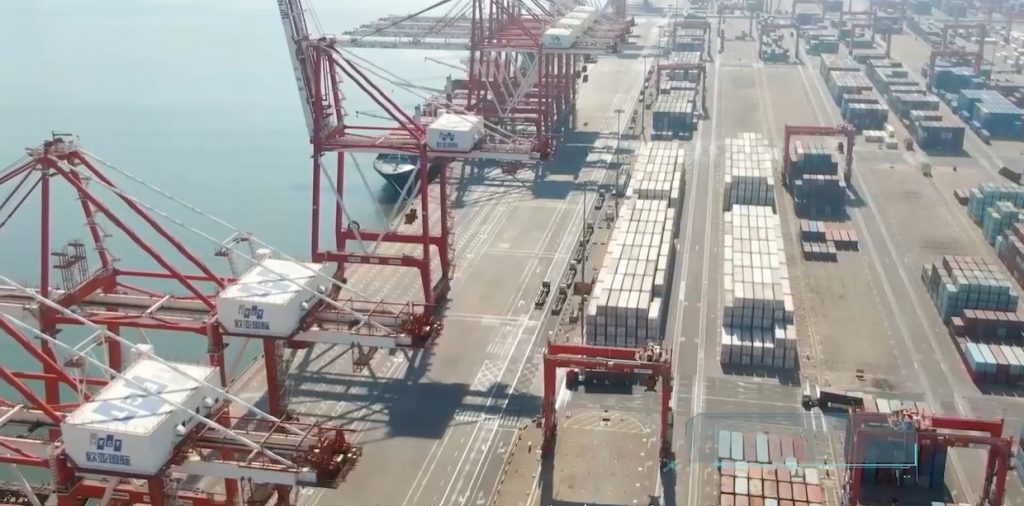Huawei seems to have shifted its focus from the smartphone industry to 5G powered infrastructure. The technology giant is banking on its 5G telecommunication-powered Tianjin Smart Port to circumvent the US sanctions and run its business.
According to Huawei, Tianjin Smart Port is a one of its kind port that uses the latest tech including intelligent twins, autonomous driving, 5G, cloud computing, and IoT to create a better connected, smarter, and autonomous port management system. The underlying architecture of this smart port, intelligently connects the various port systems, eliminating data and information silos. All applications work together, powered by the ‘Smart Hub’, which centrally manages operations.

Tianjin Port is one of the world’s seven largest ports, with an annual container throughput of 20 million TEU and 20,000 employees. The port is a zero-carbon smart terminal situated in Northern China on the shore of the Bohai sea.
As the port went digital, it saved millions in manual operation costs and also improved its operational efficiency. The smart port helped to reduce the overall cost by 30%. Moreover going green also helped in reducing the overall energy consumption by 17% as now the port produces its own renewable energy which supplements the traditional power sources.
After digitization, the port needs 60% fewer staff than before, and controls and operates devices like quay cranes, gantry cranes, stackers, and forklifts remotely from a command center nestled miles away from the bay. This means workers, especially drivers, don’t have to face dangerous and unhealthy working conditions.
Yang Rong, General Manager of Tianjin Port Second Container Terminal Co said that Huawei used a wealth of new ICTs to create Intelligent Horizontal Transportation Management System and a next-gen “intelligent port brain”. The system collaborates with key resources to automatically generate optimal loading and unloading plans. It also manages each piece of equipment, optimizing the entire dispatch process.
He further added that the horizontal shoreline terminal has the largest driverless fleet made of 76 vehicles. The smart port can move 36 20-foot boxes (TEUs) per hour, much faster than any other manual port.
Tianjin Smart Port is Huawei’s latest achievement and a masterpiece that the company proudly flaunts to the world. After the crushing sanctions by the US, that destroyed Huawei’s smartphone ambitions, the company is now planning to come back in power using its 5G technology.
Huawei is promoting its 5 G-enabled digital services and planning to bring automation and smart solutions to China’s infrastructure like coal mines, ports, and hospitals.
Bruce Xun, CEO of Huawei Global Customs & Port Business stated that Tianjin Port is truly a global one, trading with over 800 ports and 200 countries worldwide. He further added that the company is going to support the next phase of its digitalization, which will help the port become even greener, smarter, and more secure.
While experts are quite positive about Huawei’s future moves including its 5G technology, they believe that the push to digitalization is not going to result in a transformative change. The 5G revolution will help Huawei to generate rapid business in the next 5 to 10 years. But for now, the ongoing US sanctions remain the biggest threat for the company, especially for products that require advanced computing power like smartphones, servers, and car components.
- China Reacts Strongly Against US’ Plan to Boycott Huawei
- Huawei MateBook E Go 2023 Goes on Sale in China
- Best Smartphone Gaming Accessories in 2023
- Microsoft to Soon Demo ChatGPT-like AI in Word, PowerPoint, and Outlook
(via)







